The Peculiar History Of The USS Wake
For being a relatively small river gunboat, the USS Wake has a surprisingly long history. Initially ready for service in 1927, the gunboat has been captured a number of different times and has been used in active service as a warship for multiple countries.
Origins as USS Guam
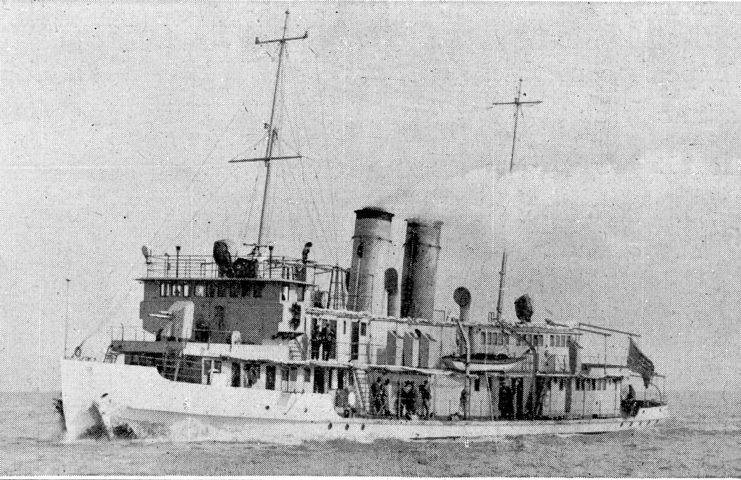
The USS Wake was first known as the gunboat Guam. Guam was first launched on May 28, 1927, in Shanghai, China, and commissioned on December 28, 1927, with Lieutenant Robert K. Awtry in command. The USS Guam was one of the six new river gunboats that had been built to replace old gunboats on the Yangtze River.
Initially, the primary mission of Guam was to ensure the safety of American missionaries and other foreigners. On July 4, 1930, Guam sailed for Yochow and Chenglin to check on the American’s and foreigners, as both cities had fallen into the hands of the Communists. As the ship neared the post of Yochow, it was met with rifle fire from the shore. This brief encounter resulted in the death of one crew member aboard Guam.
Guam also functioned as a radio spy ship to track Japanese movements. As China fell further into Japanese Imperial control, Guam continued to patrol the Yangtze River. By 1939, the USS Guam was followed by a Japanese warship wherever she went.
The Capturing of USS Wake
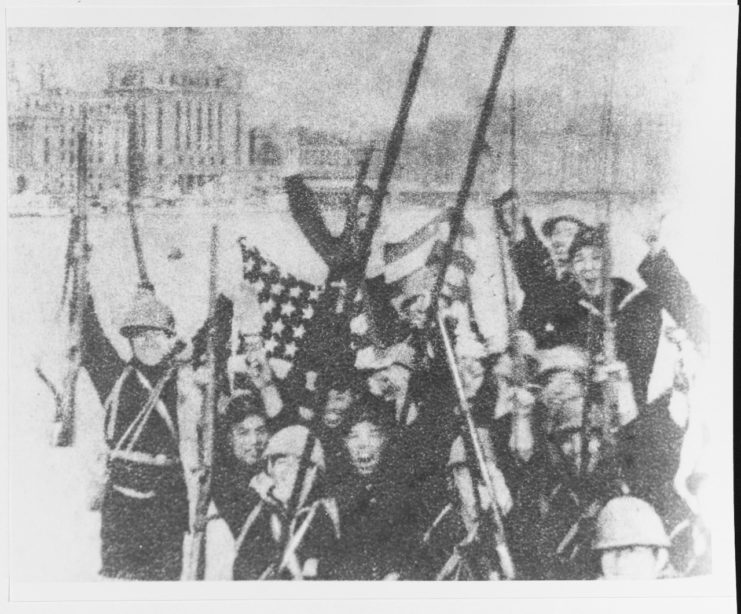
In 1941, the USS Guam was renamed the USS Wake because her former name was being used for a new battlecruiser that was being built in America. In November 1941, Lieutenant Commander Andrew Earl Harris was ordered to close the American Navy installation at Hankow and sail for Shanghai.
On November 28, 1941, Lieutenant Commander Harris and most of his crew were transferred to gunboats and told to sail to the Philippines. On this day, Lieutenant Commander Columbus Darwin Smith was summoned by Admiral William Glassford and was asked to take command of the USS Wake. Lieutenant Commander Smith seemed to be the obvious choice for this position. Smith was an old “China hand” with years of experience in the Far East. He was also a member of the Shanghai Pilot’s Association, who assisted in guiding international shipping up the Yangtze River and onward to the Whangpoo River to Shanghai. Furthermore, Smith was able to speak Mandarin Chinese and could get by in Japanese.
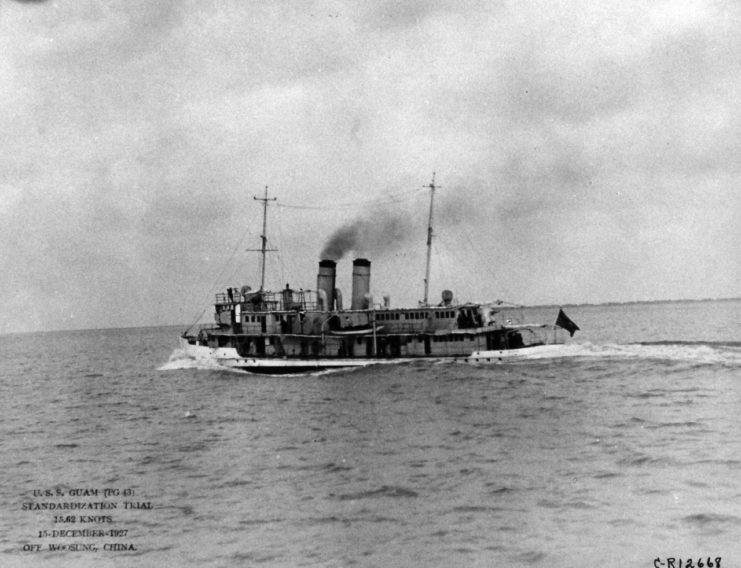
On November 30, 1941, the USS Wake reached the coast of China. It was here that her crew was divided between the two ships, the Luzon and the Oahu. These two larger ships then set sail for Manila while a skeleton crew of about 14 reservists stayed onboard the USS Wake to serve as a radio outlet for a handful of Marines and the Consular force left there. There were no docks along the Bund, so the USS Wake was simply stationed at an anchorage in the middle of the Whangpoo River.
One week later, the Japanese attacked Pearl Harbor on December 8, 1941 (December 7, 1941, in Hawaii). Immediately after these attacks, the Japanese demanded that Wake’s crew surrender and quickly captured the gunboat. Lieutenant Commander Smith was the first American taken prisoner by the Japanese. Commander Smith and the crew of the USS Wake were thrown into a prison camp near Shanghai, where the American marines and sailors captured on Wake Island would also be imprisoned. During the Second World War, the USS Wake was the only American Navy vessel to have been captured by the enemy intact.
USS Wake in Japanese Service
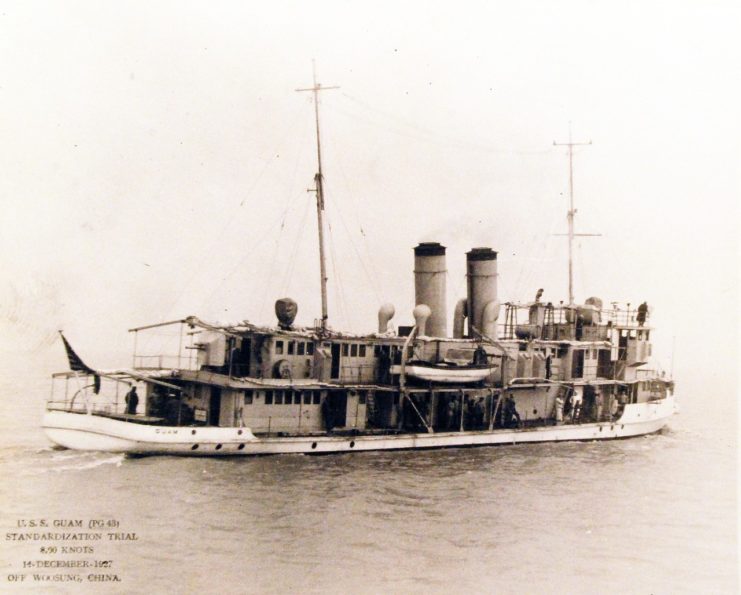
By December 15, 1941, the USS Wake had been renamed IJN Tatara and attached to the Sasebo Naval District. Tatara was assigned to the China Area Fleet in the Shanghai Base Force.
Throughout the Second World War, Tatara was attacked by the Allies multiple times. By September 1945, the Japanese troops in China formally surrender and, Tatara was given back to Allied forces. The United States then gave the USS Wake to the Chinese Nationalist Party, which renamed the gunboat RCS Tai Yuan.
In 1949, the RCS Tai Yuan was captured by the People’s Republic of China and served with the Communist force until the 1960s. No other American Navy ship has been named Wake, although a Casablanca-class escort carrier first launched in 1943 was dubbed Wake Island.
Fate of Lieutenant Commander Smith
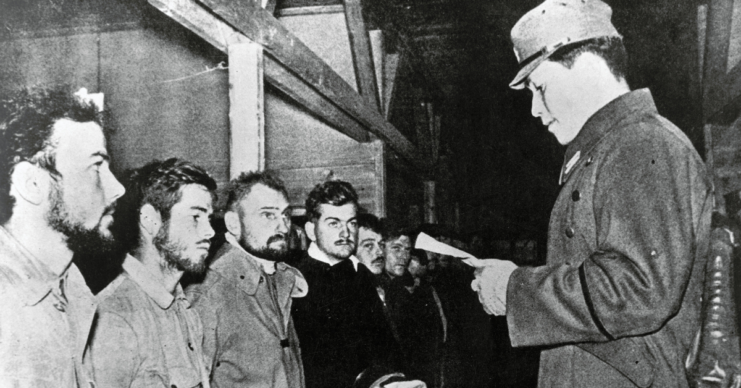
An interesting side story involves Lieutenant Commander Smith, who was taken prisoner by Japanese forces after the attack on Pearl Harbor. Commander Smith escaped Japanese internment not once but twice during a three-year period.
In January 1942, Commander Smith was moved to Woosung Prisoner of War Camp, where he met Commander John Woolley of the Royal Navy. On March 10, 1942, Commander Smith, Commander Woolley, and two others dug beneath the electric wiring surrounding the POW camp and escaped. However, only hours later, the four men were recaptured by Chinese soldiers working with the Japanese.
The escapees underwent brutal punishment at the hands of the Japanese for their escape attempt. They were taken to Ward Road Jail to be tried with desertion from the Japanese army and put on trial before a military court. After the trial, the four men were thrown into solitary confinement for a total of 52 days, all while not knowing their fate. Finally, they were taken back into the courtroom and Smith received a sentence of 10 years’ imprisonment.
Smith and Woolley were still determined to escape Japanese confinement. Smith, Woolley, and a handful of other POWs made a rope of sheet and worked together to climb over a 25-foot-high wall. After successfully breaching the wall, Smith and his companions traveled over 700 miles on foot to Chinese Nationalist Lines and were flown to eventual freedom.
Post a Comment
0 Comments